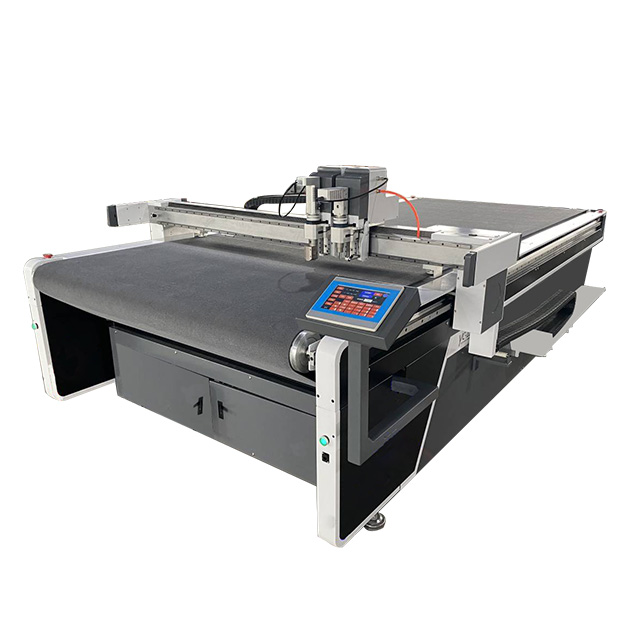The integration of advanced sensors in leather cutters contributes significantly to their efficiency by providing real-time data, enhancing precision, improving safety, and enabling adaptive control.
Here are ways in which advanced sensors benefit leather cutters:
- Material Sensing and Identification:
- Sensors can identify and sense different types of leather materials, including variations in thickness, texture, and color. This information allows the cutter to adjust cutting parameters dynamically based on the specific characteristics of the material being processed.
- Automatic Material Alignment:
- Sensors can be used to detect the position and alignment of the leather material on the cutting bed. This information enables the cutter to automatically adjust the material placement for accurate and consistent cuts, reducing the chances of misalignment and waste.
- Real-Time Monitoring of Material Properties:
- Sensors can continuously monitor the properties of the leather, such as tension and stretch. This real-time feedback allows the cutter to adapt its cutting parameters to account for variations in material behavior, ensuring precise and uniform cuts.
- Pattern Recognition and Edge Detection:
- Advanced sensors, including vision systems, can recognize patterns and detect edges on the leather. This capability is crucial for ensuring accurate cutting along intricate designs, patterns, or irregularly shaped pieces, contributing to the overall precision of the cutting process.
- Quality Inspection:
- Sensors can be employed for quality inspection during and after the cutting process. They can detect defects, imperfections, or irregularities in the leather, allowing for immediate corrective actions or removal of faulty pieces, thereby enhancing the overall quality of the cut leather.
- Automatic Correction of Cutting Paths:
- In the event of material distortions or irregularities, sensors can trigger automatic corrections to the cutting path. This adaptive control ensures that the cutter maintains accuracy even when faced with variations in the material, leather cutters contributing to waste reduction and improved efficiency.
- Cutting Depth Control:
- Some sensors can measure the thickness of the leather material, enabling precise control over the cutting depth. This feature is particularly useful when cutting multi-layered or variable-thickness materials, ensuring consistent and accurate cuts across the entire material.
- Collision Avoidance:
- Sensors can be integrated into collision avoidance systems to detect obstacles or unintended objects on the cutting bed. This feature enhances safety by preventing collisions that could damage the cutter or compromise the quality of the leather cuts.
- Temperature and Humidity Monitoring:
- Sensors can monitor environmental conditions, such as temperature and humidity, which can impact the properties of leather. This information allows the cutter to adjust cutting parameters based on the prevailing conditions, maintaining optimal cutting performance.
- Waste Reduction through Nesting Optimization:
- Sensors, in combination with intelligent software, can optimize the nesting of leather patterns on the material. By minimizing waste through efficient pattern arrangement, the overall material utilization is improved, contributing to sustainability and cost-effectiveness.
- Energy Efficiency:
- Sensors can contribute to energy efficiency by monitoring the machine’s operation and triggering power-saving modes when the cutter is not in active use. This helps reduce energy consumption during idle periods, aligning with sustainability goals.
- Predictive Maintenance:
- Sensors can monitor the condition of critical components in the cutter, providing data for predictive maintenance. This allows for proactive maintenance interventions, minimizing unplanned downtime and ensuring the longevity of the equipment.
Incorporating advanced sensors into leather cutters enhances their overall efficiency by providing real-time insights, enabling adaptive control, and improving the precision of the cutting process. These benefits collectively contribute to increased productivity, reduced waste, and enhanced quality in leather cutting operations.
